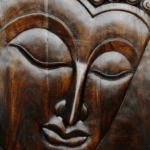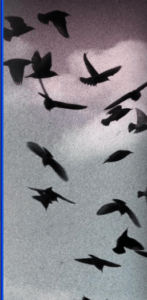Table of Contents

What are the 4 steps to change habits and lifestyle behaviors ? patterns? “Yes!” is the right answer. However, personal change is a tricky matter and requires strategic personal change management tools as well as an understanding of how to use psychology to make things better.
Often in couples therapy one of the partners will say, “I wish my partner would do——,” and then they list the behavior or things they want different in their mate. When I say to that partner with the wish list, “You want your partner to change?” often the response is, “No, I don’t want to change them. I just want them to do x, y or z, (whatever it was, for example, show more respect or take more time making love,”) etc.
It amazes me that for the partner wishing the partner to do something differently with them isn’t seen as requesting the partner to change. From my perspective, it is a change and often a very big change, meaning one that is difficult to bring about because old behavior is so entrenched or habituated.
Change Habits and Lifestyle Behaviors With a Smile
“Change brings us essential experience, yet so many of us resist and fear it instead of welcoming it as something that enables us to progress and become more spiritually aware today than we were yesterday. Here’s to the opportunities to grow change will present us with today!” Michael George Reccia
Change is change. By the same token, if nothing changes, nothing changes. When anybody does anything different, changes the pattern, shifts to new behavior or breaks up a normal routine peculiar to that person, I call that making a change.

You Change So I Don’t Have To!
Usually, that partner with the wish list of changes for his or her partner is not even thinking about making changes themselves. If I suggest they be willing to change, do the same thing they are wanting their partner to do, that person will dig their heels in, stating that the partner is in the wrong and therefore the one who should change to make things better, not them. And that’s when the fight starts, fueled by self-righteous justification. No one seems to want to change much of anything when told and demanded to do so by another person. The comeback is, “Hell no. I’m fine the way I am. You change.”
Psychology provides effective tools for making changes of just about any sort. This can include a person’s behaviors, actions, and thought patterns, level of emotional awareness and interpersonal behavioral dynamics or habits. Change is very much a part of life. In fact, on both a grand scale and a micro level, change is necessary to sustain life on this earth.
On the larger level, change are mall around us and constant: seasonal changes, economic changes or growth patterns that move us from immaturity to maturity. A change pattern we call “growth” is necessary to move us from childhood to adulthood. If change did not occur, we would not be able to grow food which requires seeds to change into mature plants producing more seeds which then change again having grown into mature plants you and I can eat for survival. The same applies to all animal growth and development.
On micro levels, breathing itself is a change pattern necessary to sustain life. You breathe in but you must change again and breathe out. Patterns and rhythms of daily living are matters of change occurring in orderly fashion. Sun-up to sun-down, for example. Seasons move from hot to cold and then back again. It rains and then it dries up and rains again, all examples of changes we may take for granted.
Despite the fact that change appears to be ubiquitous and a necessary part of life, there are enemies and forces that resist change. The major one is called “status quo.” It is a resistant, stubborn force that holds patterns in their normal processes and resists modification.
Status quo, despite its resistance to change, is also necessary for orderly sustenance of life as we know it. If it weren’t for status quo, chaos would reign and the only pattern we could count on would be predictable unpredictability, total randomness. This would not allow patterns to persist long enough for life to exist as we know it.





